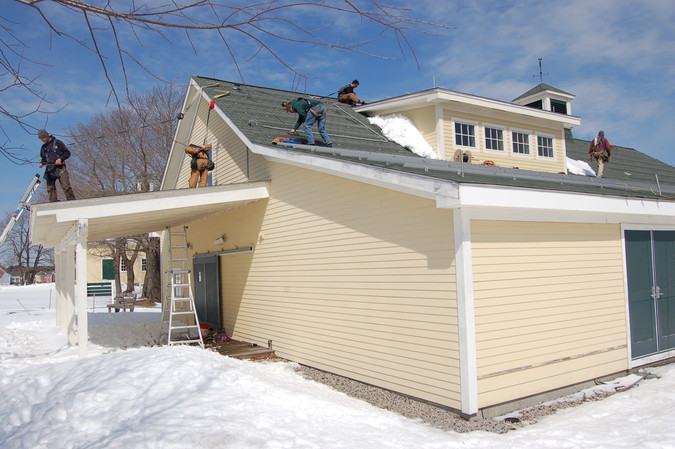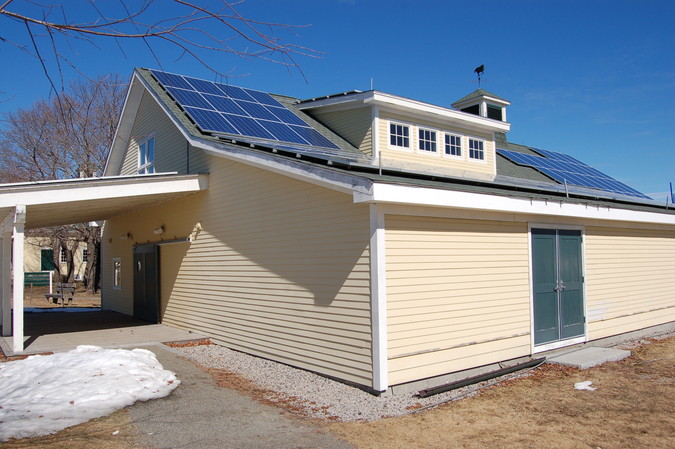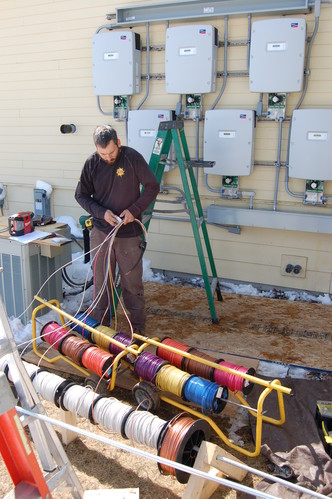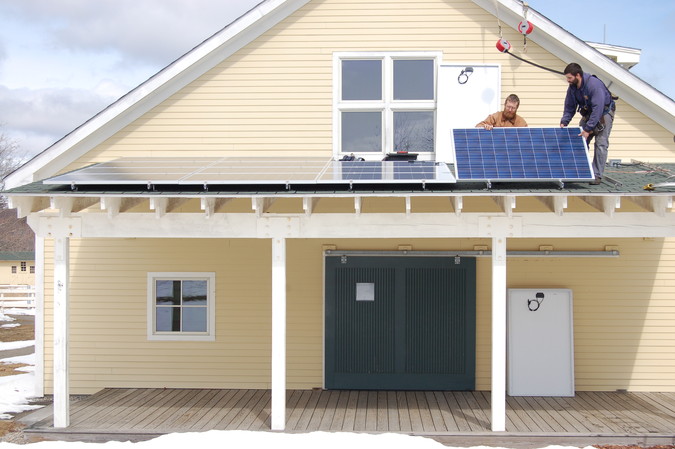The Wrack
The Wrack is the Wells Reserve blog, our collective logbook on the web.
The Wrack is the Wells Reserve blog, our collective logbook on the web.
Just hours before the vernal equinox, installers from ReVision Energy were shoveling snow off the roof of our Maine Coastal Ecology Center to make way for the reserve’s first major solar array. By afternoon the roof was clear and dry, thanks to its southeast exposure, and the workers went about building an aluminum framework and running wires.

Within a week, the roof-mounted array of 142 250-watt panels was fully in place. The new 37-kilowatt system is expected to produce about 42,000 kilowatt-hours of clean, renewable energy annually while offsetting an estimated 54,000 pounds of carbon emissions.

The array is connected to six power inverters, which convert the direct current (DC) electricity harvested from the sun to the alternating current (AC) electricity that most lights and appliances need.

The inverters are tied into both the Coastal Ecology Center and the grid, so when the sun is shining the building's lights and lab equipment will draw what they need. Any extra power production feeds back to the grid and is credited on our electric bill. The system should save the reserve $6,000 to $7,000 annually.

The Wells Reserve at Laudholm has jumped with both feet into the era of energy conservation and power generation. This project complements our environmental mission, reduces our carbon footprint, and begins to cut our operating costs.
Our long-term goal is to produce 100% of our electrical energy through on-site renewable sources. Completion of this first phase starts us on the road to energy independence and models how capital investment can assist other organizations in becoming more sustainable.
Funding for the solar power system has come from the National Oceanographic and Atmospheric Administration, the Mattina R. Proctor Foundation, the Davis Conservation Foundation, and individual donors to Laudholm Trust.